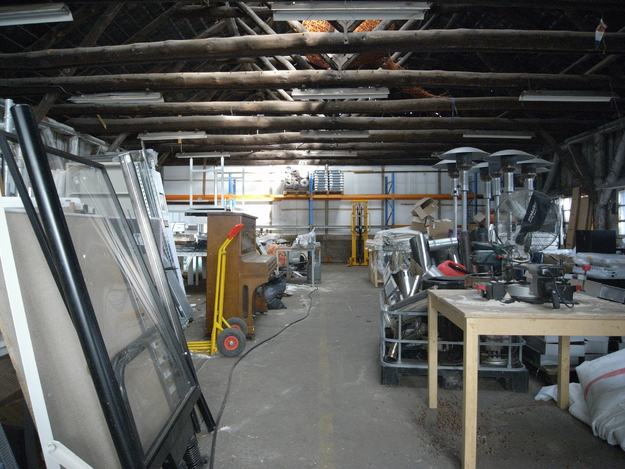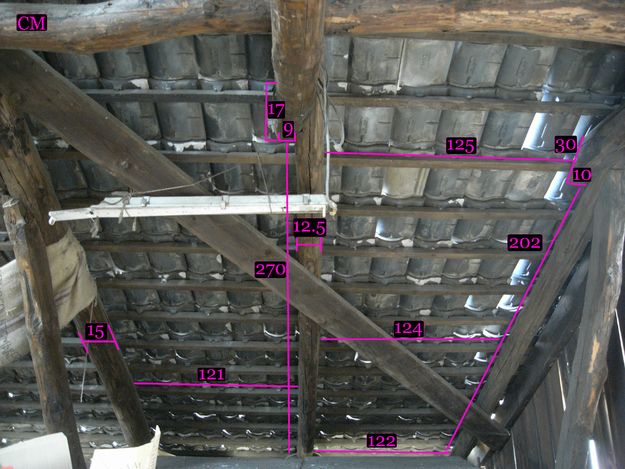Welcome to Part 1 of the MycoInsulation blog, where we will describe the slow but steady process of insulating an historic barn in the centre of Amsterdam using little more than agricultural waste and mushrooms! The black barn will soon become the beating heart of many Mediamatic events and talks.
Currently, it's a draughty, cold and damp space. Its paint is peeling, windows cracked and the floor space is filled with all kind of artifacts from Mediamatic's history. The process of growing mycelium on agricultural waste and used cacao jute sacks will be displayed in the barn whilst the insulation is being applied. This involves creating beautiful and captivating machines - from a clean lab to an incubator.
Visitors will be able to inspect the machines and the mycelium workers behind the plastic in the sterile clean lab. It's extremely important that the machines and exhibition maintain the honest purpose of insulation. The exhibition will be a working production line.
The Issues Of Working With An Aging Barn.
___
Before we can even start to design such an exhibition, we have to think about the panels themselves. They will be placed in the roof of the barn, and at each gable end. The barn is built with log beams and simple cladding, it is no masterpiece of design, nor is it perfectly measured. Each insulating panel that we place in the roof or on the walls will have to be hand cut for its place.
Another issue to consider is the amount of dirt and dust in the barn. Before we can start it needs a good spring cleaning. Taking out all the bits and pieces from our move from the Van Genthallen, dusting down the beams and sweeping out the floor. This will be achieved in the coming weeks. Then, and only then can we start to build our production line and start to insulate the building.
How We Are Going To Do It.
___
How are we going to insulate the barn using mushrooms? Good question! The process starts with mixing husks, with vermicullite - a silicate mineral which aids with keeping the panel nice and moist - and water. Jute is cut from a roll and sewed into an appropriately sized panel. Both the substrate - the husk mixture - and the jute are then sterilised using a pressure cooker, heating the parts to 121°C.
The sterilised jute and substrate should now be completely free of living organisms - giving our mushrooms the best chance of colonising the panel and turning it into beautiful mushroom insulation rather than a pile of mould and bacteria! The substrate is innoculated with mycelium spawn - grain which has already been colonised - and then wrapped up to prevent infections before sitting in a lovely warm incubator for up to four weeks, during which time the mycelium will grow over everything - substrate and jute to create a spongey insulating panel!
All that's left is to roast the panel at 121°C to permanently stop the growth and prevent the mycelium from eating up the barn's historic beams. The finished panel will then be triumphantly lifted up to the rafters of the barn, where it will sit above all the exciting things happening below.



